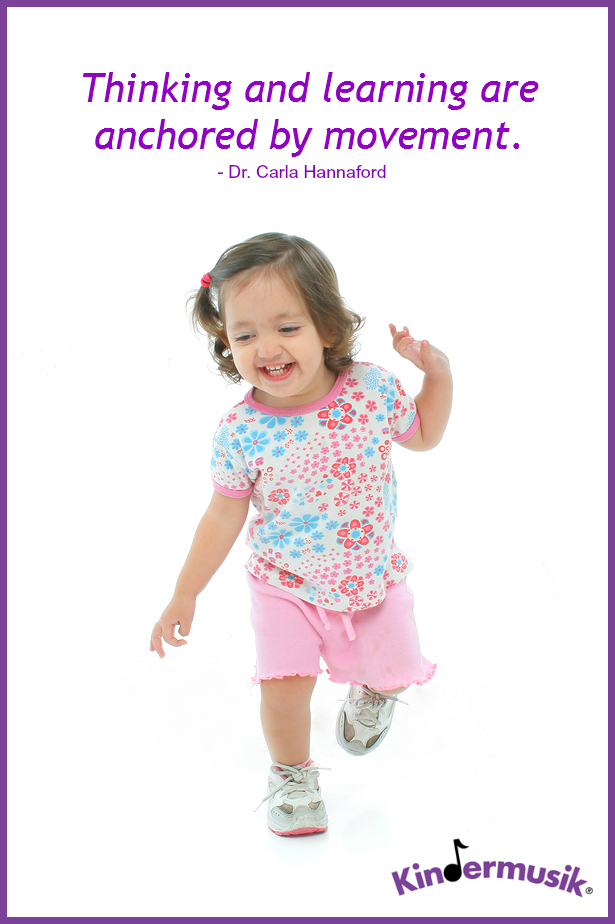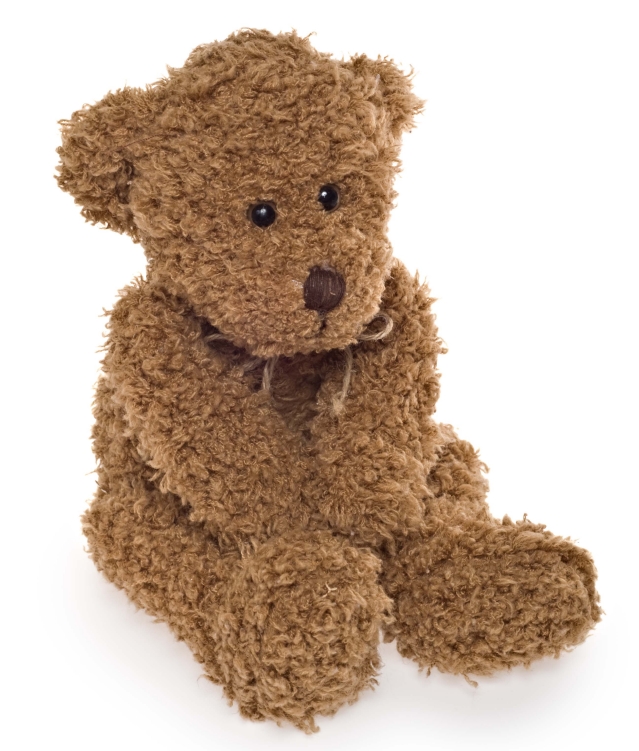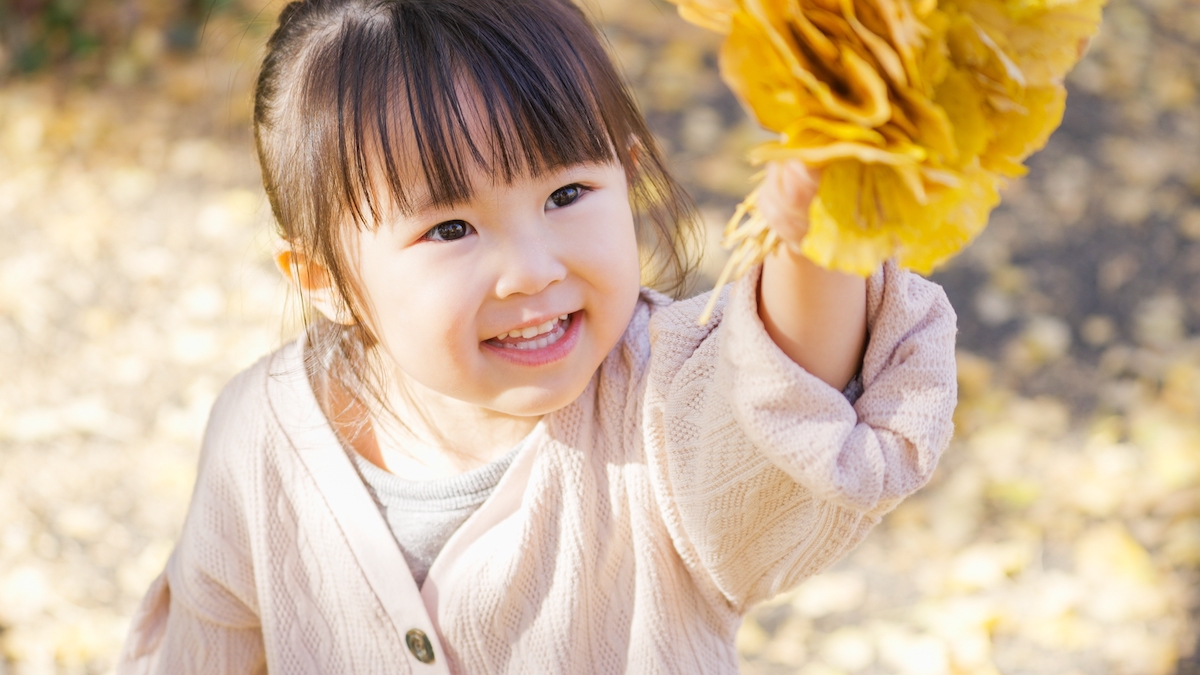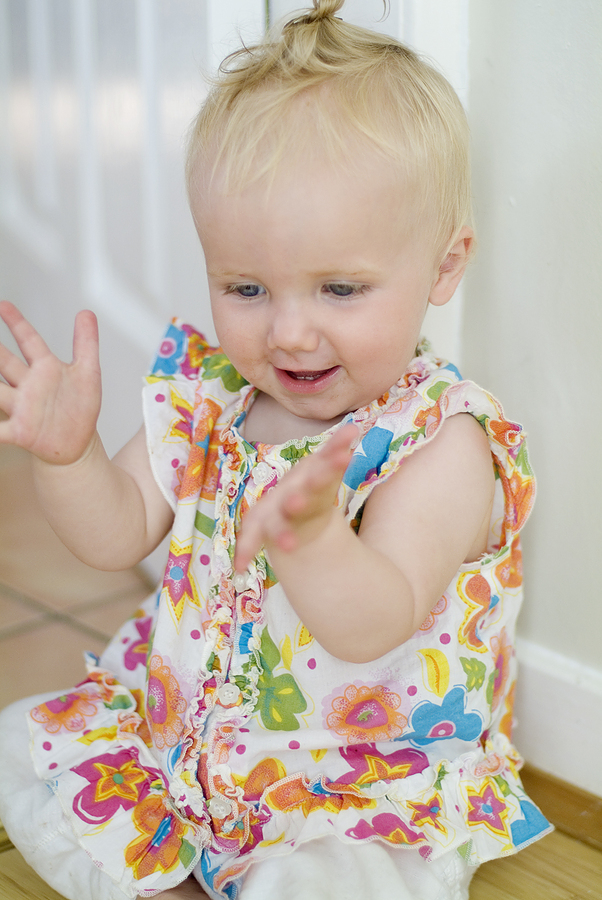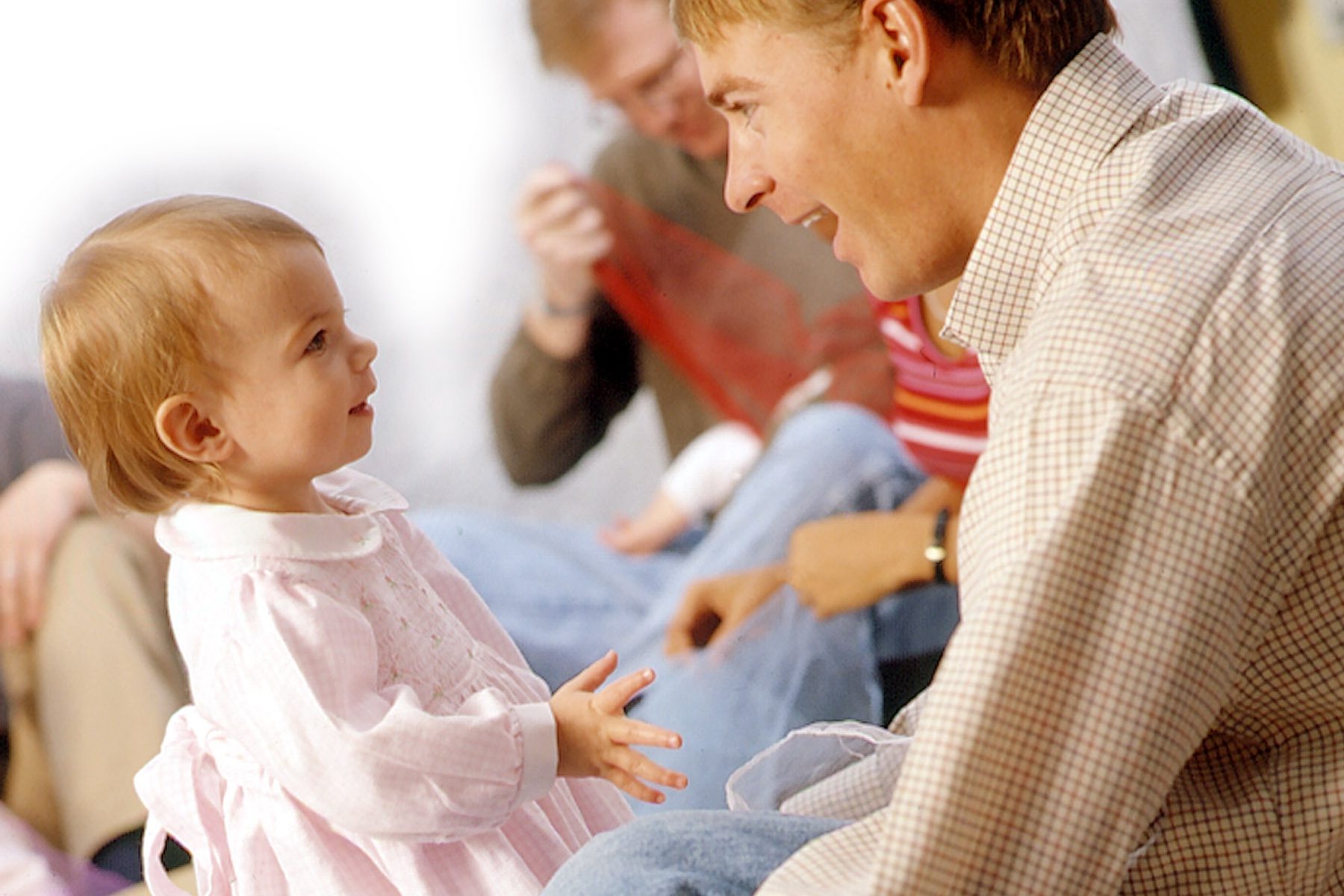 A recent article in the Washington Post highlighted a growing concern for parents and educators: more and more kids are having trouble sitting still in school. The root of the problem is that kids are being expected to sit still for longer periods of time. Recesses are shorter, and often kids aren’t running, jumping, and playing outside even once they get home.
A recent article in the Washington Post highlighted a growing concern for parents and educators: more and more kids are having trouble sitting still in school. The root of the problem is that kids are being expected to sit still for longer periods of time. Recesses are shorter, and often kids aren’t running, jumping, and playing outside even once they get home.
Our bodies are wired to move. In fact, it is through movement that the brain becomes activated for learning. This is often why kids get wiggly and fidgety – their bodies are trying to wake up their brains! It is also through movement that kids develop core strength, increase their coordination and balance, stimulate their vestibular systems, and improve gross motor skills – among other things.
In this Kindermusik video, expressive movement is helping these young children gain a greater understanding of a poem about a train as they visualize and act out the words through movement. Notice how the children hear the words (aural), see the words represented in the movement (visual), and act them out (kinesthetic). Even though the children are doing the movements while seated, they are working out some of their wiggles and sealing in the learning – all at the same time!
[youtube]https://www.youtube.com/watch?v=saygYVHlPII[/youtube]
Learn more about how children benefit from the powerful combination of music and movement at www.Kindermusik.com.
Who ever heard of an impolite Teddy Bear? Nobody! Introducing Unit 4 of ABC English & Me, Hello Teddy
 Is there such a thing as impolite Teddy Bear? No! This lovable toy provides a sense of comfort to every child — and every parent who was once a child. In this unit, Teddy Bear will help children learn polite greeting rituals, label different colors and clothes when he gets dressed for school, and he’ll help young children develop gross motor skills and learn to follow directions through simple games such as throwing and catching a ball. All while being huggably polite.
Is there such a thing as impolite Teddy Bear? No! This lovable toy provides a sense of comfort to every child — and every parent who was once a child. In this unit, Teddy Bear will help children learn polite greeting rituals, label different colors and clothes when he gets dressed for school, and he’ll help young children develop gross motor skills and learn to follow directions through simple games such as throwing and catching a ball. All while being huggably polite.
Additional movement activities help children develop an internal sense of control as they play instruments along to the music — stopping when the music stops, speeding up and slowing the tempo.
Target concepts
Following directions
Inhibitory control
Developing gross motor skills such as throwing and catching a ball
Polite rituals and greeting vocabulary
New and reinforced vocabulary words
bear, farm, horse, town, bus, car, bed, kitchen, tractor
teddy bear puts on…, t-shirt, jeans, shoes, socks, sweatshirt, green, blue, red, yellow, white, black, brown
New movement concepts
Turn around, touch the ground, show your shoe, dance on your toes
touch your nose, tap your head, go to bed, wake up now, take a bow
wave your hands, side-to-side, walk, tiptoe, skip, leap
sit down, tap your head, touch your nose, reach up high
Music activities
Playing with sandblocks: tap, up high, down low, fast, slowly, stop, “Let’s play with the music!”
The drum! Focused listening activities include counting and tapping the drum, as well as taking turns with the drum
Available now in the Digital Teacher’s Guides.
To learn more about digital teacher’s guides and Kindermusik, click here.
Inspiration behind the Mother Tongue Lullaby Project
Experts say linguistic diversity is a crucial component to preserving disappearing languages around the world. This video – as well as all the Kindermusik Educators in over 35 countries around the world – inspired the Mother Tongue Lullaby Project.
With this project, we’re hoping to record mothers and fathers from around the world singing their first language lullabies. These soothing songs are one of the first ways we, as children, experience language, comfort, and bonding. Before we could understand the words and their meaning, lullabies could communicate that “music is in the house, all is well. Everything here is safe enough to soothe and sing to you. ”
As you can hear from the hand full of lullabies we’ve already recorded and posted, these lullabies still communicate an unbreakable bond between the parent, or grandparent and child.
If you’re a Kindermusik Educator, a parent, grandparent, or loving uncle, or aunt; or you simply have a favorite lullaby to sing for us in your Mother Tongue language, please let us know. We’d love to record you.
We can record your songs over the phone, and we’ll post the recordings to the project’s sound cloud account, as well as on the project’s tumblr site.
- Do you know a lullaby in one of these disappearing languages?
- Mother Tongue Lullaby on soundcloud.com
- On tumblr
- Watch the project’s video launch
The “Process”
This post was shared from a mom enrolled in Kindermusik classes at Studio3Music, the world’s largest Kindermusik program.
As a mom of 2 very different boys, one with sensory processing issues and one with a severe bleeding disorder, I know things in my house can be far from considered normal. I remember going to Kindermusik when the older one (with SPD) was little. He was always so BUSY!
It seemed like all the other 6-9 month old babies were happy and content to sit in their mommies’ laps and smile and clap with the music. They would wave as the shakers were put away and smile again when the next song would start. Not my baby. He would crawl around the room, looking under curtains, pulling himself up where ever he could. He’d look for anything out of place to discover and get into. I was practically chasing him around the room!
When shaker time was over, he’d fight to keep that thing in his hand and when the shakers disappeared, he’d scream and cry through the entire next song. I’d quietly soothe him, whispering in his ear. I could feel all the other moms looking at me. Sometimes we’d leave the room until things got calm.
This is when I’d come back and Miss Allison would talk about “The Process.” My younger boy never had this issue, although his deal is to just lie like a log on the floor during the dancing music. Everyone just dances over him like he’s a prop on the carpet. Of course I’m used to being the family that stands out in a crowd. Neither child really follows anything.
After years with Miss Allison and learning from Montessori school, I have become adjusted to knowing what “The Process” really means. At 6-9 months old, the older child was processing everything in his environment. Including the music and songs of Kindermusik. A week or two after learning a new song or dance he’d try mimicking it at home. Not often in class. He was too busy there. Too busy PROCESSING everything.
The little one does the same thing. He may just lay and roll on the floor in class, but on the way home he sings every single word to every song. I learned something else about The Process over these 5 years as well. Letting go of the Perfectionist in myself.
After setting out all the supplies for our family gingerbread house, I had ideas of creating a masterpiece, but after several summers of Kindermusik crafts and home art projects I knew the house was going to be anything but that. The boys jumped right in icing and decorating until every bit of candy was either on that house or had been eaten.
Throughout, I kept reminding myself that it’s all about THE PROCESS. I’ve seen other moms do all the gluing and sticking and messy work for their art projects or have a separate “kid’s Christmas tree” so that the “real” tree can look like Martha Stewart’s, and that’s fine. Those trees are beautiful and the projects look just like the originals.
What I’ve learned about The Process is that as much as I want that perfect looking tree and gingerbread house for my very own, I remember the original ones even more. I remember the hand turkey with 3 eyes and feathers on his head but none on the fingers part. The gingerbread house with candy only on one side or only decorated with the blue candies. I remember the Santa picture that I had to be in with my sweats on, hair a mess and no makeup because the little one would not go near the man in the red suit. This is all part of The Process.
The Process, where not only the children are learning and growing and absorbing, but I am too! The perfectionist still wants to fight it but I remember all these things to keep her at bay, and until the children can hang outside Christmas lights on their own, I can still light up the neighborhood in my own Martha Stewart-ness. So the next time you see us dancing to the beat of our own drum, you can stare, it’s okay. We are just processing and making memories while doing it.
Shared with permission from Studio 3 Music, the world’s largest Kindermusik program, from a Studio 3 Music blog post written by Kindermusik mommy Heidi Forrester… who still hopes her gingerbread house will one day look like the picture on the package.
Meet a Kindermusik educator: Aimee Carter
Location:
Brandon, Florida
Studio name and link:
Delightful Sounds
www.delightfulsounds.com
Number of years you’ve taught Kindermusik:
7
Describe yourself in five words or less:
Creative, fun, energetic, and silly
Favorite Kindermusik song:
The Morning Song, because I like coming up with crazy animal sounds for the unexpected, animal choices like manatees or hippos.
Favorite Kindermusik activity, and why:
Anything with bilibos. I love all the ways we can play with them!
A proud moment in a Kindermusik classroom:
I love getting to see all the first steps and first words along with the parents. I get pretty excited about seeing the children grow and learn.
Something your Kindermusik children or families have taught you (could be inspirational, humorous, practical, etc.):
The children have really helped me become even more creative. They can really get outside of the box sometimes, and I LOVE that!
Something funny a child has said or done in your classroom:
The preschoolers crack me up. I never know what they will say or do next. Last week, one of the children stopped me in the middle of a song to ask “if I ever had fire come out of my butt?” LOL I never could figure out what it had to do with the train song???
The reason you teach:
I am passionate about music and the development of children. Kindermusik allows me to combine both of these as I work side by side with such wonderful families each week!
5 Aesthetic Awareness Activities for Kids
Aesthetic awareness, or the ability to observe, process, react to, and value nature and artistic expression, plays an important role in early development.
Our reactions to unusual sounds and sights can occur naturally, but grownups nurturing the listening skills, self-control (think: standing still to watch a hummingbird), and conversation it takes to really appreciate the beauty around us is critical for children.
Here are a few easy tips you can try…
Continue reading “5 Aesthetic Awareness Activities for Kids”
What do you hear?
 Pitter, patter, pitter, patter… I can HEAR the rain.
Pitter, patter, pitter, patter… I can HEAR the rain.
Musically speaking, rain sounds are short sounds. The musical term “staccato” refers to sounds that are separated and often short. It’s the perfect word to use when playing with – and describing – rain sounds. But did you know that being able to identify a sound as “short” (staccato) or “long” (legato) actually involves some pretty high-level thinking and listening skills?
Active listening differs from simple hearing in that we must choose it as an intentional act. Analytical listening, like the kind we will do in Kindermusik class when we explore different shaker sounds and mimic and identify a variety of rain sounds, takes the development of our music listening skills to a whole new level.
Analytical listening is an absolutely vital skill, for music class and for life because it requires children to:
– Evaluate what is heard and comprehended
– Contemplate and reflect
– Weigh new information against what is already known
– Discuss by sharing thoughts, opinions, and viewpoints
As Kindermusik teachers, it is an awesome privilege for us to be able to help shape a child’s disposition and aptitude for learning music – practicing the skills that lead to competency and enjoyment and encouraging the attitude that music is fun. Music truly is a powerful tool for representing ideas and expressing individuality, especially when a child develops the ability to listen analytically.
In the Kindermusik classroom where so many of the senses are often engaged simultaneously and where imagination can soar, musical learning truly has the potential to be the strongest and most powerful.
Posted by Theresa Case, whose Kindermusik program at Piano Central Studios is proudly among the top 1% of programs worldwide.
Let’s jump for joy!
This article was originally written by Kindermusik educator Helen Peterson. Helen’s Kindermusik of the Valley program, located in and around the twin cities, MN, is one of the top programs in the world.
 In a relatively recent study, 4 to 6 year old children in music and movement programs were tested to see how they compared to children enrolled in a traditional physical education program. The results were interesting, to say the least. The children getting music and movement instruction showed more growth in motor skills than those in a standard physical education program. Here’s a quote from Early Childhood Research Quarterly (Vol. 19, Issue #4, 2004):
In a relatively recent study, 4 to 6 year old children in music and movement programs were tested to see how they compared to children enrolled in a traditional physical education program. The results were interesting, to say the least. The children getting music and movement instruction showed more growth in motor skills than those in a standard physical education program. Here’s a quote from Early Childhood Research Quarterly (Vol. 19, Issue #4, 2004):
“In a study 50 children were enrolled in a music and movement program, and 42 children were enrolled in a traditional physical education program. After 8 weeks, the children in the music AND movement group had improved significantly in both jumping and dynamic balance skills when compared to their peers in the traditional program.”
As a Kindermusik educator, I have had many parents ask me how Kindermusik compares to Gymboree or Little Gym, now I can honestly say (as I suspected): movement + music (Kindermusik) really is the best choice.
Again, again!!
 Again, again!! There’s a reason why those are two of your child’s favorite words – repetition is the way your child learns best. Repetition also provides children with a sense of security and predictability, setting the stage for optimal learning. Kindermusik takes full advantage of a learning environment that capitalizes on the comfort of repetition, both in class and at home – especially through the Home Materials.
Again, again!! There’s a reason why those are two of your child’s favorite words – repetition is the way your child learns best. Repetition also provides children with a sense of security and predictability, setting the stage for optimal learning. Kindermusik takes full advantage of a learning environment that capitalizes on the comfort of repetition, both in class and at home – especially through the Home Materials.
Childhood is all about learning. And while it’s tempting to indulge in all the latest learning trends, videos, or technology, for a child, the single best learning tool is repetition. Each time a child is exposed to a new object or experience, new neural connections are made in his brain. Through repetition, these connections are strengthened. Add a little twist to the repetition, like when we add a new verse to a song or a new prop in class, and these neural pathways strengthen and become super-highways of learning.
Repetition is not only good for your child’s brain; it’s highly beneficial for your child’s overall development. Repetition helps your child learn and remember new information, thus giving her a boost of joyful self-confidence because she can predict what comes next. Then there’s also the immense satisfaction of mastering something. Repetition is the way that your child reminds himself of a newfound skill, and the way he experiences a great deal of pleasure through a sense of completion and mastery. Parents can use this love of repetition to their advantage by establishing predictable routines and rituals in the morning or evening, thus helping their child feel secure and in control – something that’s very important to a small child!
Each Kindermusik curriculum from Village to Young Child is deliberately designed to repeat certain activities, in part because of this important connection between repetition and learning, but also because repetition of activities promotes bonding and nurtures a sense of community and belonging. With the Kindermusik experience, ritual and repetition are key components of a predictable and nurturing environment in which learning, bonding, and a love for music naturally and beautifully unfold.
Benefits of repetition in a nutshell:
- >Repetition fuels your child’s memory, confidence, and motor skills.
- >Repetition expands your child’s understanding of the world around him.
- >Repetition contributes to your child’s intellectual development by reinforcing her understanding of the way the world works.
- >Repetition spurs motor development.
- >Repetition helps your child feel good about himself because it reminds him of what he can do.
- >Repetition builds a sense of trust, helping a child develop healthy relationships with others.
- >Repetition is one way your child can exert some control over his environment, which is extremely gratifying for someone with such limited control over her world.
Posted by Theresa Case, whose Kindermusik program at Piano Central Studios is proudly among the top 1% of programs worldwide.
11 Ways to REALLY Listen to Your Child
The follow post was shared with Minds on Music from Kindermusik educator Vanessa Cabrera’s Language, Music & More blog.
A few days ago I read this: “We were given two ears but only one mouth, because listening is twice as hard and important as talking.”
Well, it’s true! It made me think about how much children have lot to say… a lot! Sometimes adults don’t think that children have anything important to say or that they can’t learn from children. So often times the adult does all the talking. They lecture, preach, or, worst of all, ignore the child. Listening to your children will help them grow up to be adults with increased self-esteem because you made them feel that what they have to say is important.
That said, children are not always sure how to communicate their feelings, so they might say something or act completely different from how they actually feel. Active listening can help you to help them figure it out! Here are some tips to REALLY listen to your child:
1. Stop what you are doing. Don’t be distracted doing something else.
2. Look at your child. Sit at his/her level.
3. Pay attention to your child’s nonverbal language. Does the child look happy, sad, afraid?
4. Be silent. It might be hard, but it is important that they have time to express themselves. It will also give you time to understand the situation before reacting.
5. Use simple acknowledgement responses that show you are listening. “I see.” “Oh.” “Uh-Huh.” or “Hmmm.”
6. Use “door-openers”: phrases that encourage further talking. “Tell me more.” “What else?” “Go on.” “How do you feel about that?” “Then what?”
7. Listen for and name the feelings you think you hear from what your child is telling you. “That made you pretty mad, didn’t it?” “You seem really happy about that!”
8. Use problem-solving phrases when needed. “What do you wish you could do?” “What do you want to happen?” “What do you think will happen if you do that?”
9. Don’t feel that you must advise or help your child come up with a solution all the time. The value of listening is in the listening itself.
10. Let them know you are available.
11. Don’t try to deny, discount, or distract the child from the feelings they are expressing.
Listening helps parents and children avoid the power struggle cycle. Instead of arguing or disagreeing, listen. Show your understanding while maintaining your position. Listening builds stronger relationships, shows respect, and helps the child explore his/her own feelings and thoughts on a deeper level. It builds their sense of empathy.
So, are you ready to listen to your child?
Special thanks to Kindermusik educator Vanessa Cabrera for sharing this post from her Language, Music & More blog. Information about Vanessa’s Maryland Kindermusik program can be found at her blog.

